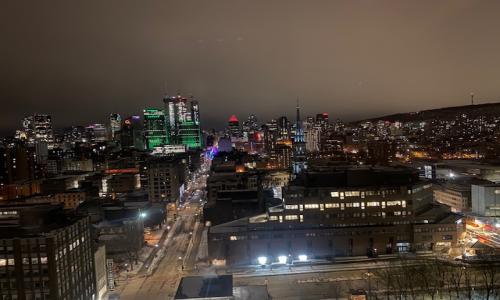Today, as the Dow falls over 300 points and is down over 1,000 points in the past ten days, I thought it would be useful to revisit my Dow Jones Industrial's crash analysis I did in 2008. The analysis compared how the Dow was faring during the global financial crisis versus how it did in the 1930s in the throes of the Great Depression.

Below is the a chart which extends the analysis to 2011 and the historical graph through 1950. The years 1930 and 2008 are time 0 on the x axis of the graph. I then looked at the 21 years before 1930 and 2008 to see how the markets performed before the 1930 and 2008 crashes. I also charted the 20 years after the crash in 1930, represented by the positive numbers on the X axis. The left Y axis shows the Dow's price during the early part of the 20th century and the right Y axis shows the Dow's price in more modern times.
As the chart shows, the current Dow did not drop nearly as far as the market did during the Great Depression and it recovered much faster. I attribute this to the intervention of the Federal Reserve and the large $700 billion stimulus package passed in 2009. It wasn't until 1933 that the Depression market bottomed out and then began to rebound due to government stimulus and the New Deal. Most economists believe that global spending spurred by World War II was ultimately responsible for ending the Depression for good.
It's the rebound that interests me the most now. In 1937 the Roosevelt administration cut spending and increased taxation and the result can clearly be seen on the chart. The economic downturn lasted 13 months, industrial production dropped 30%, and unemployment jumped from 13% to 19% by 2008.
We now face a similar situation. As I wrote before the drop in the stock market, it seems clear that cuts in government spending across the globe will lead to slower economic growth and even a double dip recession. The Depression only ended when the government spent massive amounts of money and took on huge debt (bigger than even today's numbers) to mobilize for war. So the question is, how are we going to grow our way out of this problem today? Can we cut our way to prosperity as the Tea Party seems to believe. Or do we need a massive project to mobilize our resources, renew optimism, and get the economy humming again?
And how far will that blue line (today's Dow) go down if we do indeed see another double dip recession. The Dow in the 1930s rebouned to almost 200 in 1936 and then dropped back to near 125. The equivalent for us would be the Dow dropping to near 10,000.












Comments
unsaved
August 05, 2011
looks more and more like our politicians have no idea what they are doing. that's not surprising. we are in a bad spell and not sure what it will take to turn this around.
Is this review helpful? Yes:0 / No: 0
Thomas
August 08, 2011
Dow down 300 points because of the S&P downgrade. If all of this becomes self-perpetuating and we do enter a recession then 10,000 may be optimistic.
Is this review helpful? Yes:0 / No: 0
cat
August 10, 2011
Hello Sol:
Your charts are most interesting, and informative. Thank you.
cat
Is this review helpful? Yes:0 / No: 0
bufferpad
November 15, 2011
I ahte to say it but i dont think were gonna get out of this anytime soon with Grease trying to go bankrupt and Itialy doing the same the market does not look likes it going to come up.
Is this review helpful? Yes:0 / No: 0
marjorie. dec. 06, 2011
December 06, 2011
It is unclear to me whether it was the cut in spending or the increase in taxation by the Roosevelt admin. which caused the economic downturn to continue another 13 months. It seems to me you are a proponent of massive government spending to increase optimism.
Is this review helpful? Yes:0 / No: 0
Sol
December 06, 2011
"It is unclear to me whether it was the cut in spending or the increase in taxation by the Roosevelt admin. which caused the economic downturn to continue another 13 months. It seems to me you are a proponent of massive government spending to increase optimism."
I am absolutely a proponent of government spending in times of recessions. The evidence shows that austerity does not work to end a recession but instead makes it worse. Ireland is at this moment trying to implement austerity and the economy is shrinking faster than the deficit can be cut. The end result is Ireland's entire economy is getting smaller even while the debt continues growing.
WWII (massive government spending) ended the Great Depression. While no one wants huge debt loads, trying to reduce spending in times of recession is counter-productive.
Is this review helpful? Yes:0 / No: 0
Add your Comment
or use your BestCashCow account